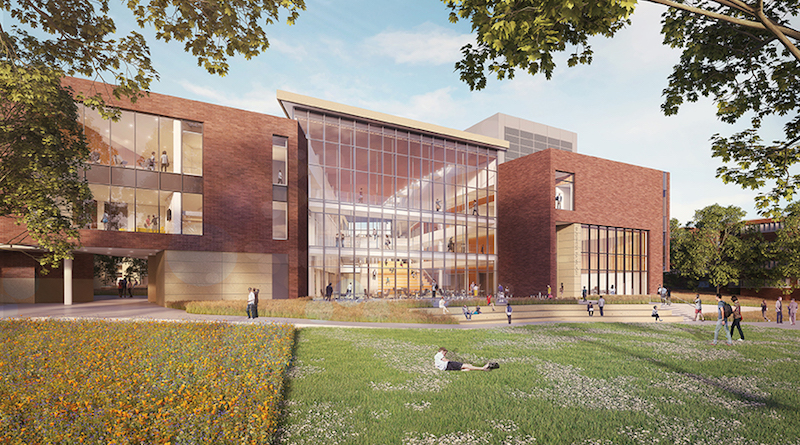MSU’s New Pavilion Creates “New Front Door” for Broad College
EAST LANSING, Mich. — Earlier this month, construction broke ground on Michigan State University’s (MSU) 100,000-square-foot Broad College of Business Pavilion. The project will transform the decades-old existing facility into a next-generation complex for business education.
The new three-story pavilion will feature collaborative learning environments for both undergraduate and graduate students as well as faculty, corporate partners and alumni who will help shape a future generation of business leaders. Seattle-based LMN Architects designed the pavilion in partnership with locally based FTCH, the architect/engineer of record. National construction firm Clark Construction Company is serving as the construction manager.
Broad College Dean Sanjay Gupta said that the new facility’s design will emphasize the importance of training students to work in teams. “We need classrooms where technology is seamlessly assimilated with collaborative spaces,” Gupta said in a statement. “This is the important remaining piece in our efforts to improve the recognition, reputation, and rankings of our programs.”
The pavilion will invite students in with a three-story atrium that serves as the “new front door” of Broad College as well as an open space to host Broad College events, recruitment fairs and collaborative learning. Amphitheater stairs continue that sense of community down to the café, multipurpose rooms and outdoor areas, according to a statement. Plus, its location in the middle of the campus along the Red Cedar River will help connect Shaw Lane and the river walk.
The entire space celebrates Broad College’s community culture and collaborative learning with a variety of classrooms, laboratories and social spaces incorporated at every turn. Natural light from a skylight and clerestory windows that span the full length of the building also enhance the space enough for students to want to stick around for independent study, group projects and informal meetings, according to a statement. Two program “bars” frame the transparent community space, providing views through the building to the landscaping outside. Corridors are designed to overlook the atrium as students walk to tiered classrooms that feature technology-enabled spaces.
The exterior perfectly blends the old and the new with glass and metal finishes that nod to a more contemporary learning environment, while mimicking other aspects of the surrounding campus to pay homage to the past.

